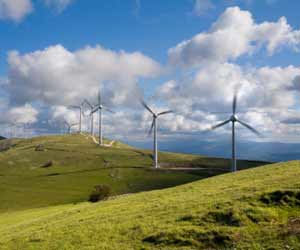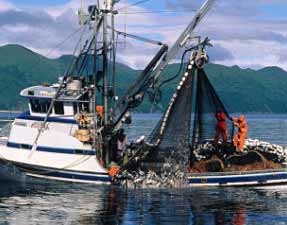Working on a Wind Farm
Wind energy is already responsible for providing power to millions of American homes and businesses and, according to the US Department of Energy, is one of the United States’ fastest-growing energy sources.

One reason for wind energy’s increasing popularity is the fact that it is derived from a renewable resource which causes minimal environmental damage. Wind resources in the US are abundant and tapping into them is simply a matter of improving technology and constructing more wind energy farms. The Department of Energy’s Wind & Hydropower Technologies program is working towards this goal by developing more efficient and cost-effective wind energy sources which will be better able to compete cost-wise with fossil fuel sources. With growing federal efforts to promote wind energy, jobs in the wind energy sector are sure to increase as well. But just what kind of work can you find on a wind farm – and exactly what is a wind farm anyway? Read on to find out.
Wind Farms and Wind Farm Jobs
You’ve probably seen pictures of wind farms – large fields covered by rows and rows of wind turbines or mills. A wind farm is essentially a group of wind turbines which are grouped together in a location where adequate wind keeps the turbines turning regularly. The turning of the wind turbines results in a mechanical motion which can be converted to usable electricity. The energy generated by each individual turbine on a wind farm passes through transformers and is then fed directly into an energy grid, which can carry energy to homes and businesses.
It takes a lot of hard work and attention to detail to build and implement just one wind farm, and many people are needed to keep wind farm operations running smoothly. Wind farms offer a diversity of career options, from turbine manufacturing to wind farm development. You can find details on three of the most in-demand wind farm jobs below, plus a list of other great wind farm jobs to check out.
Wind Farm Project Developer: A project developer oversees all aspects of wind farm development and construction from start to finish. One of the first things a wind farm project developer has to worry about is land acquisition – finding a suitable portion of land where a wind farm can be built. This entails consulting with a variety of individuals, from GIS specialists to real estate managers, in order to find an area with adequate wind resources and to secure the appropriate permits to start building. In addition to these practical details, a project developer must also deal with the business aspects of the project, such as finding potential investors to fund the wind farm’s construction and negotiating with future power purchasers.
Geographic Information Systems (GIS) Specialist: GIS specialists are essential to wind farm building as they are responsible for creating the maps used for planning and constructing wind farm sites. Things a GIS specialist must take into consideration include key traits such as the land area that the wind farm will cover and the location of transmission lines which carry the energy from the turbines to a power grid. When constructing a wind farm, GIS maps are consulted every step of the way, so it’s imperative that a GIS specialist addresses every aspect of wind farm construction.
Wind Energy Analyst: Wind energy analysts are a type of resource analyst (check out JobMonkey’s information page on resource analyst jobs for more details) whose work focuses on measuring the availability of wind energy resources in an area. Before wind farm construction on a site can begin, it’s necessary to ensure that the area has sufficient wind energy resources to power a wind farm and make the building of a wind farm financially worthwhile. The details provided by wind energy analysts can also help determine what type of wind turbines will function best given the resources available, and how the wind turbines can be best laid out to take advantage of these resources.
Additional Potential Wind Farm Jobs: There are many other jobs in the wind energy sector in addition to the five popular wind farm jobs listed above.
A real estate manager, for example, will often take charge of the legal details of leasing land for a wind farm and securing wind rights for the area. Meteorological tower specialists are often used to collect raw data that helps wind energy analysts determine the availability of wind resources at a site. Construction worker jobs and construction manager jobs are also essential to the actual building of wind farms, as are the turbine and tower manufacturers who build the actual components of each individual wind turbine. Electrical engineering jobs are also in-demand on wind farms, as electrical engineers help determine the most energy- and cost-efficient layout of turbines and power-grid connections.


 Teach English in Asia
Teach English in Asia  Cruise Ship Jobs
Cruise Ship Jobs  Alaska Fishing Industry Jobs
Alaska Fishing Industry Jobs  Sharing Economy / Gig Economy
Sharing Economy / Gig Economy